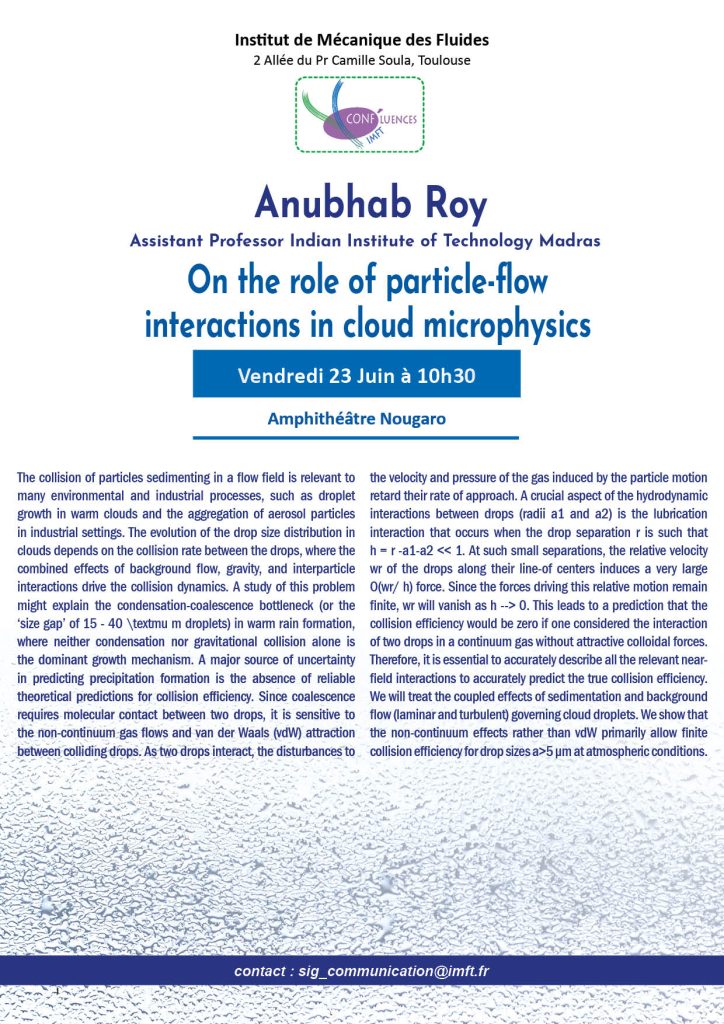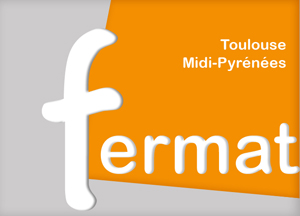Conf’luence Anubhab Roy
Assistant Professor Indian Institute of Technology Madras
Vendredi 23 Juin à 10h30 – Amphithéâtre Nougaro
The collision of particles sedimenting in a flow field is relevant to many environmental and industrial processes, such as droplet growth in warm clouds and the aggregation of aerosol particles in industrial settings. The evolution of the drop size distribution in clouds depends on the collision rate between the drops, where the combined effects of background flow, gravity, and interparticle interactions drive the collision dynamics. A study of this problem might explain the condensation- coalescence bottleneck (or the ‘size gap’ of 15 – 40 \textmu m droplets) in warm rain formation, where neither condensation nor gravitational collision alone is the dominant growth mechanism. A major source of uncertainty in predicting precipitation formation is the absence of reliable theoretical predictions for collision efficiency. Since coalescence requires molecular contact between two drops, it is sensitive to the non-continuum gas flows and van der Waals (vdW) attraction between colliding drops. As two drops interact, the disturbances to the velocity and pressure of the gas induced by the particle motion retard their rate of approach. A crucial aspect of the hydrodynamic interactions between drops (radii a1 and a2) is the lubrication interaction that occurs when the drop separation r is such that h = r -a1-a2 << 1. At such small separations, the relative velocity wr of the drops along their line-of centers induces a very large O(wr/ h) force. Since the forces driving this relative motion remain finite, wr will vanish as h –> 0. This leads to a prediction that the collision efficiency would be zero if one considered the interaction of two drops in a continuum gas without attractive colloidal forces.
Therefore, it is essential to accurately describe all the relevant nearfield interactions to accurately predict the true collision efficiency.
We will treat the coupled effects of sedimentation and background flow (laminar and turbulent) governing cloud droplets. We show that the non-continuum effects rather than vdW primarily allow finite collision efficiency for drop sizes a>5 μm at atmospheric conditions.






